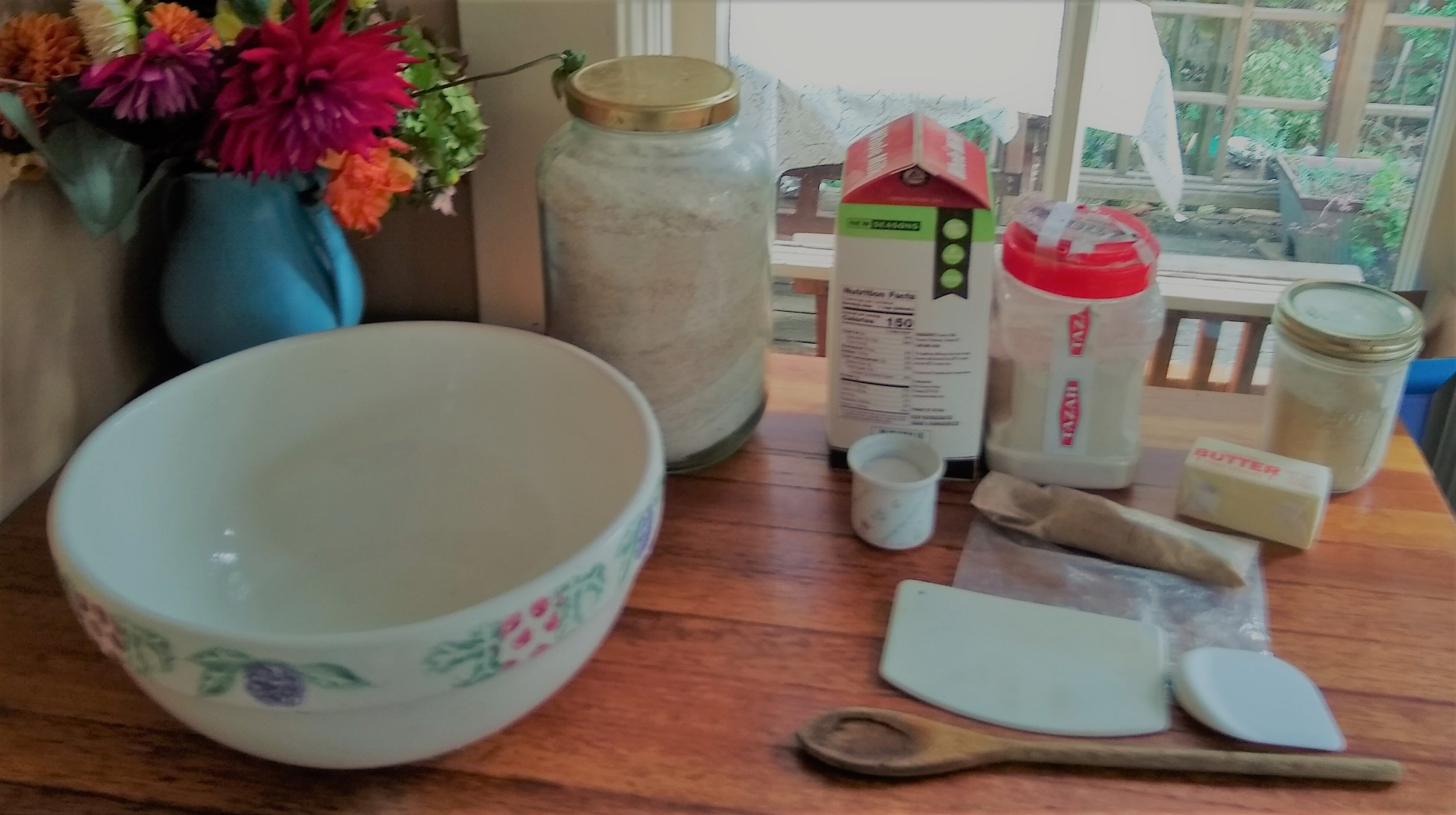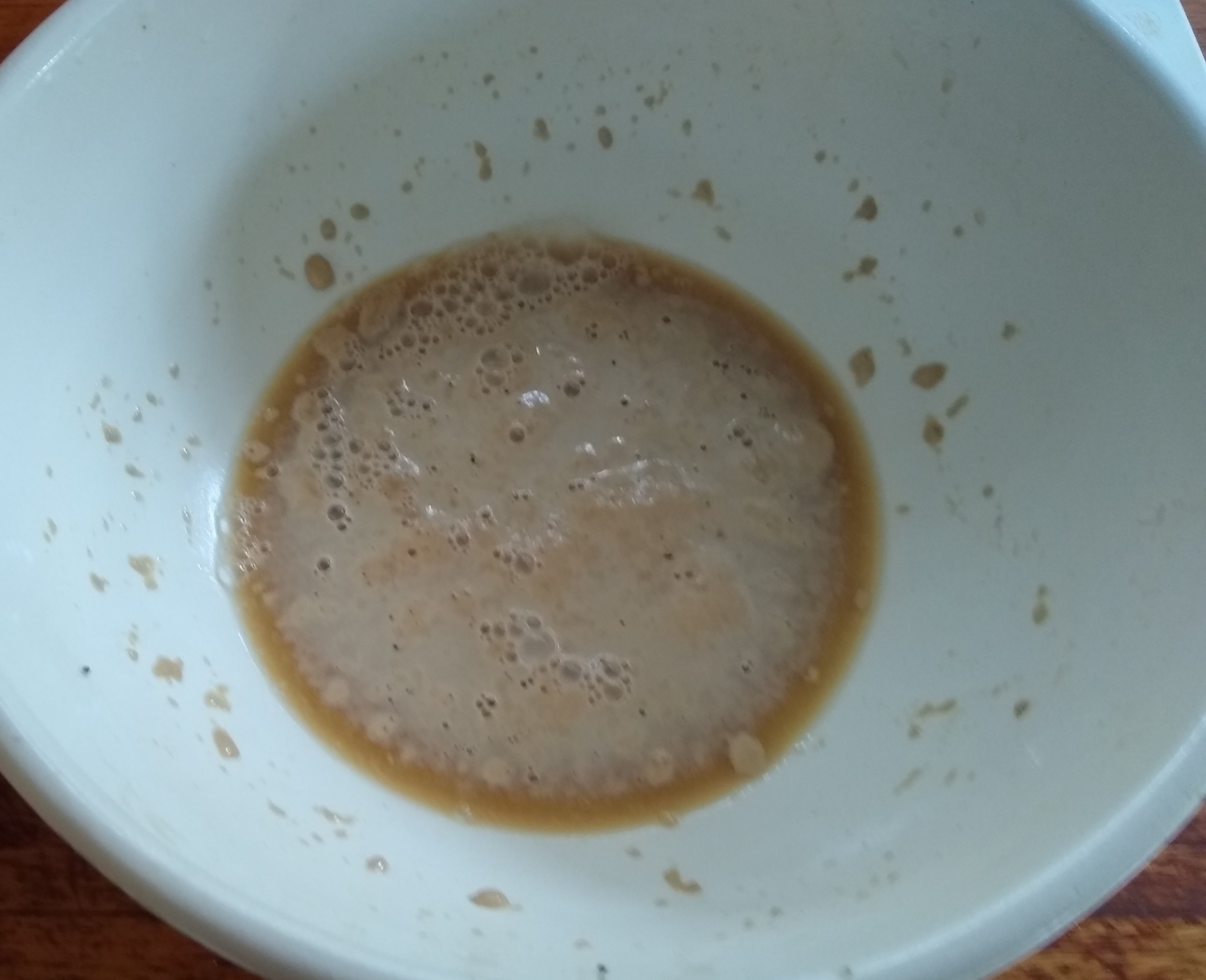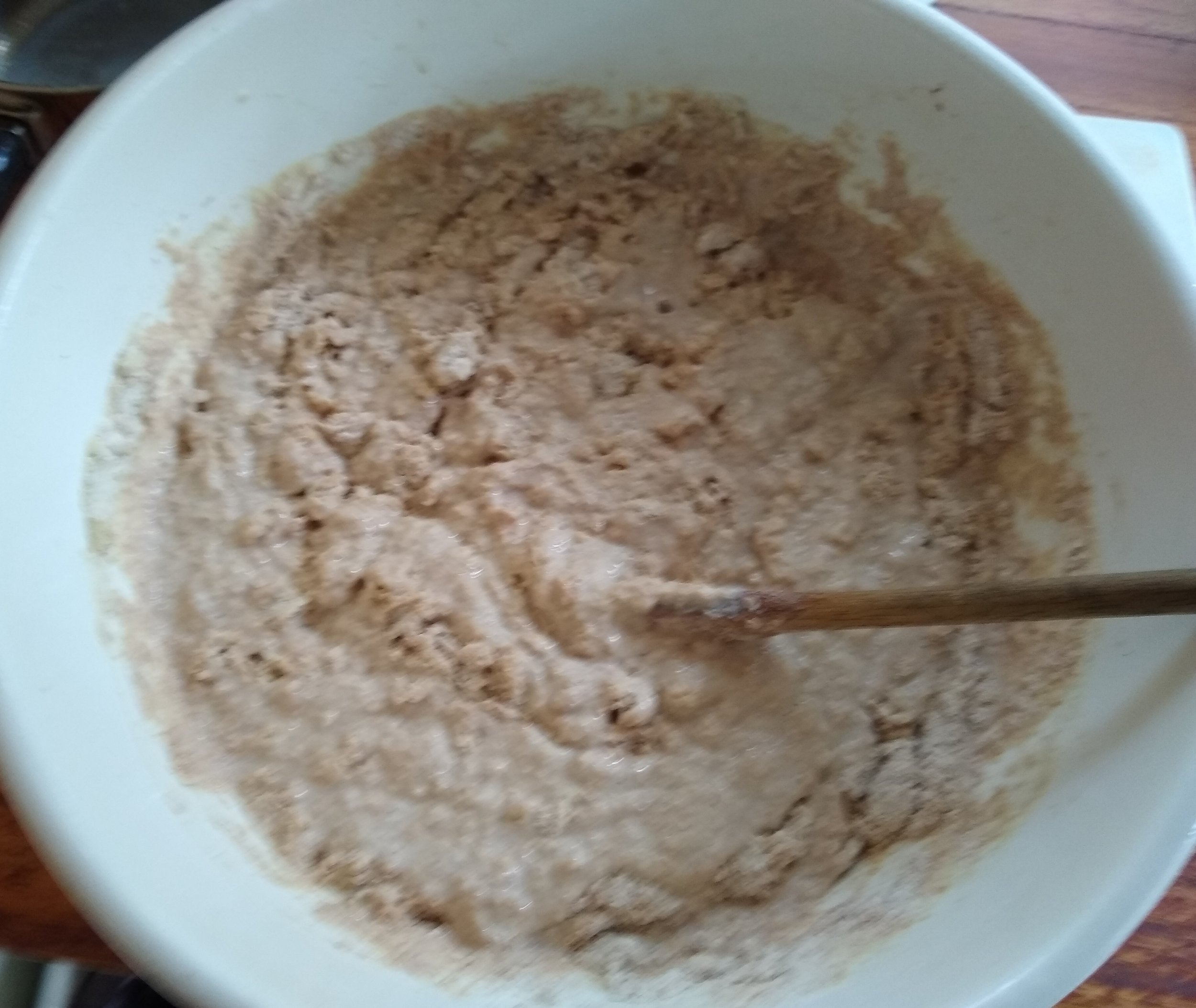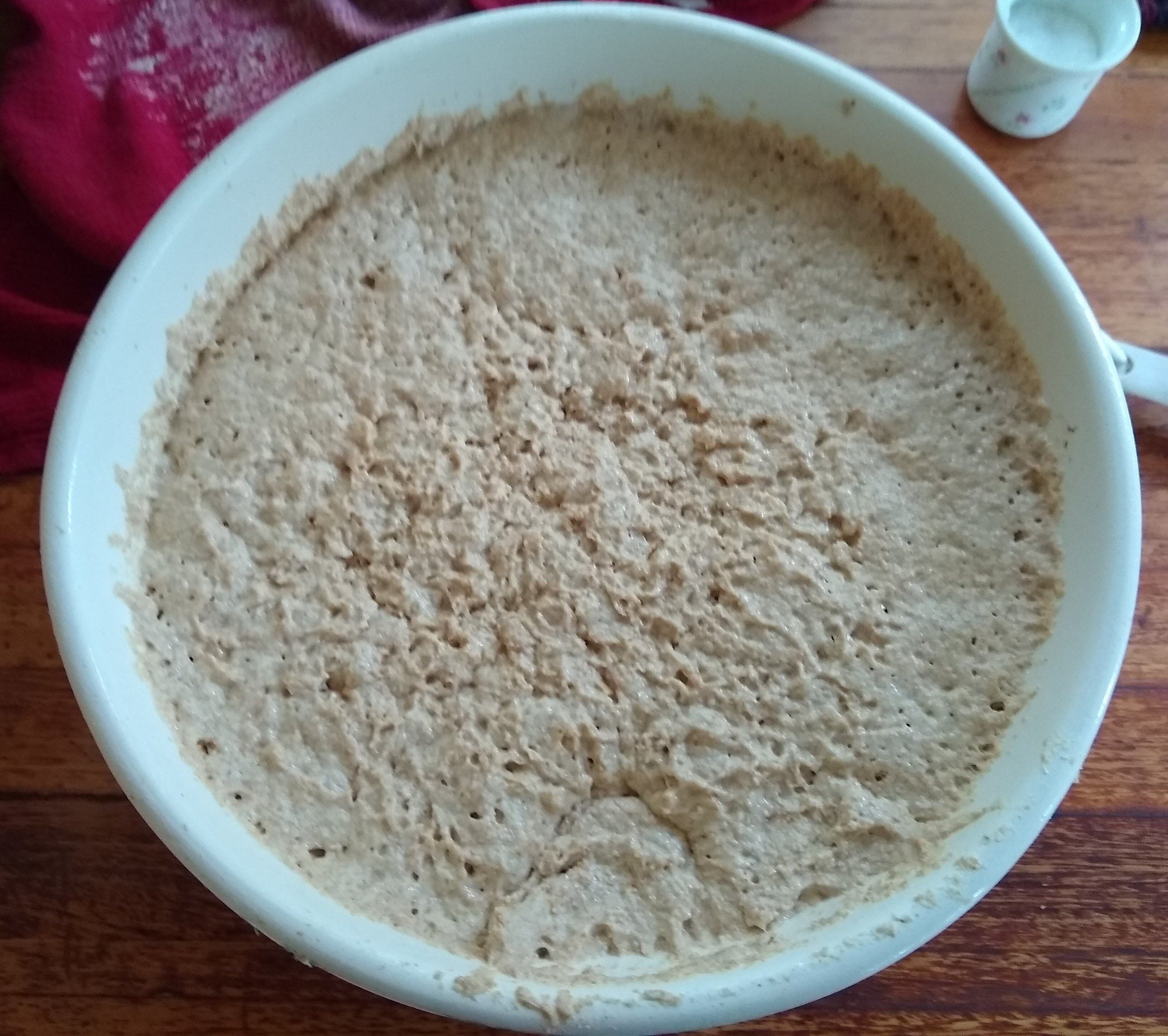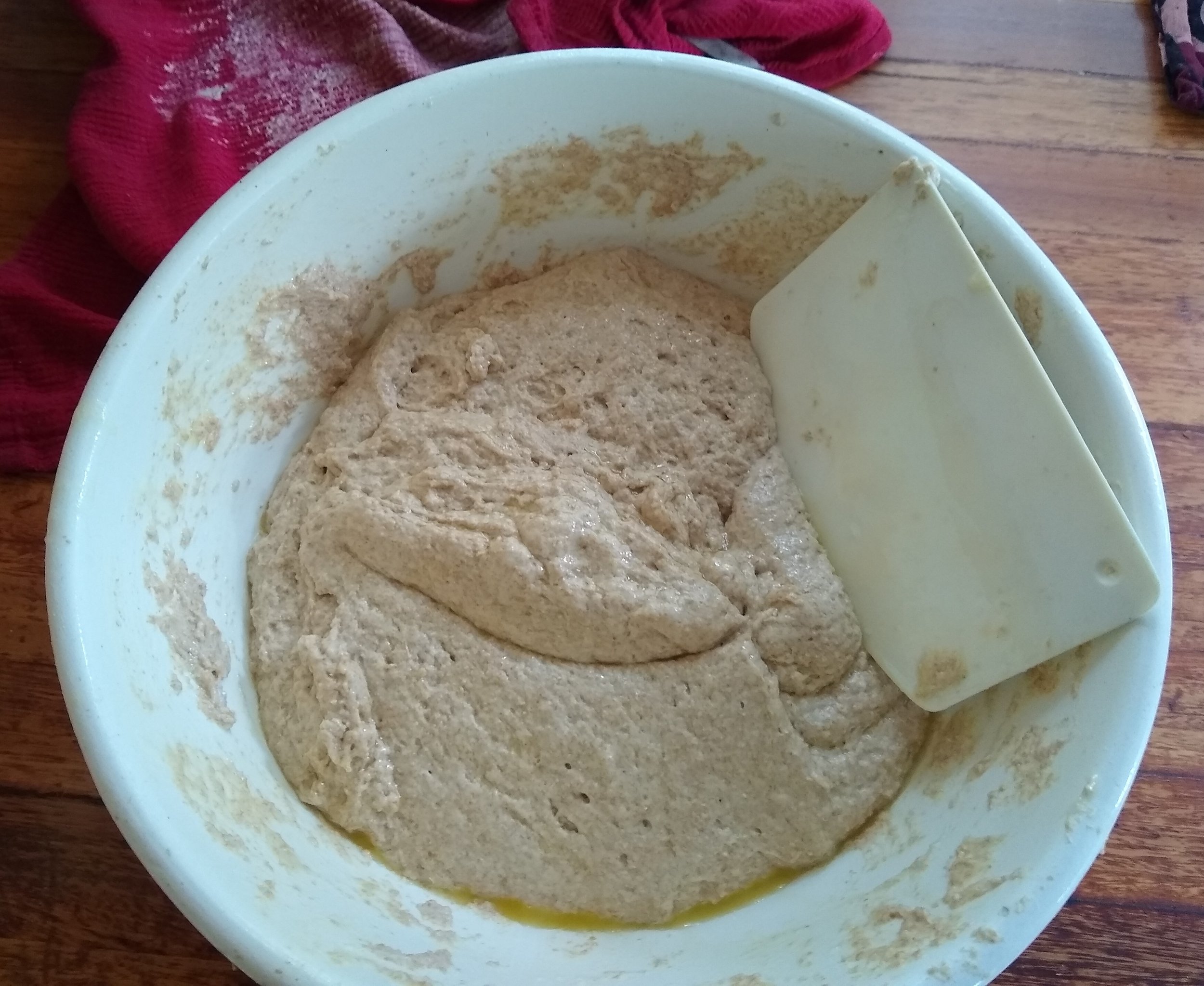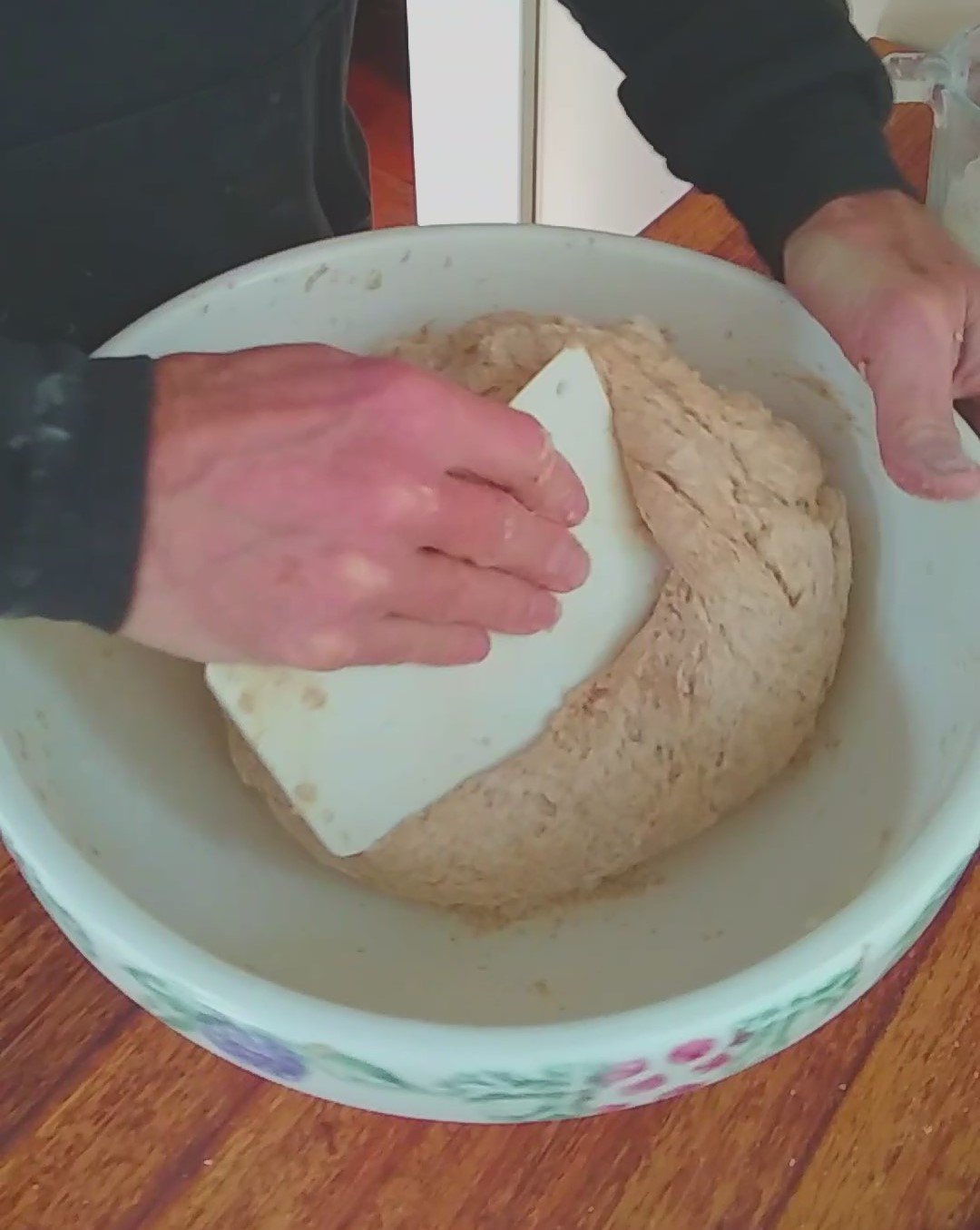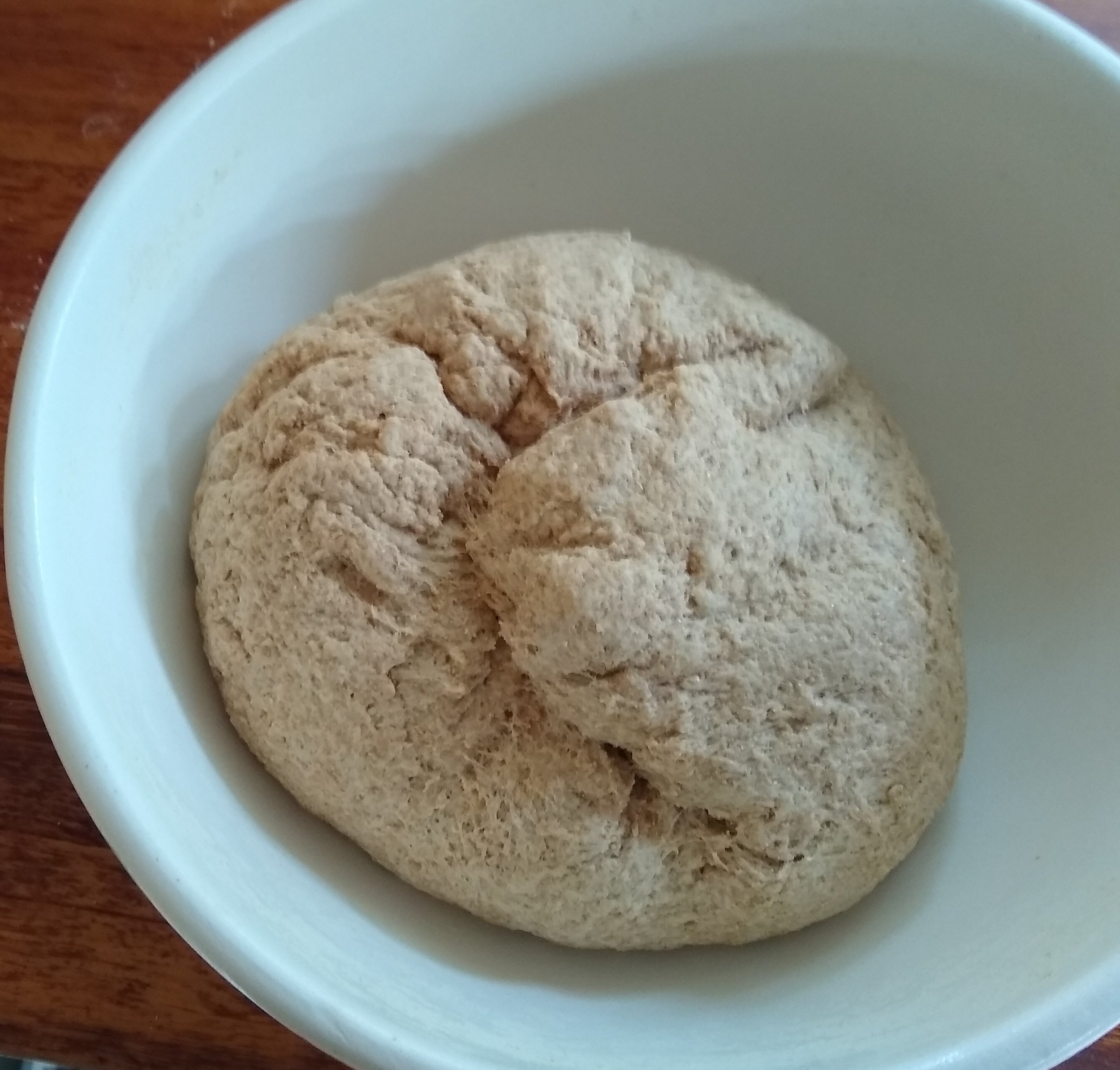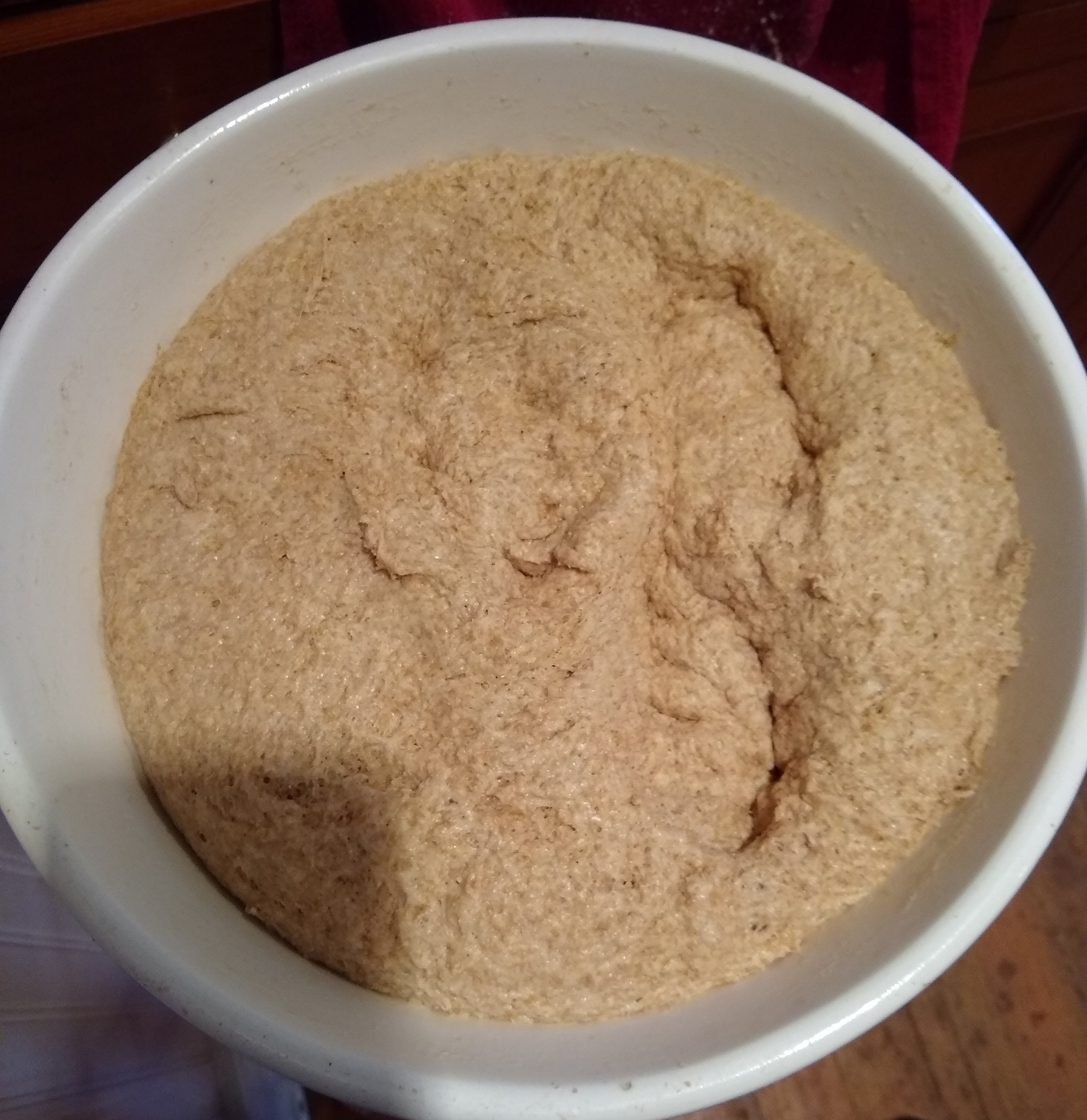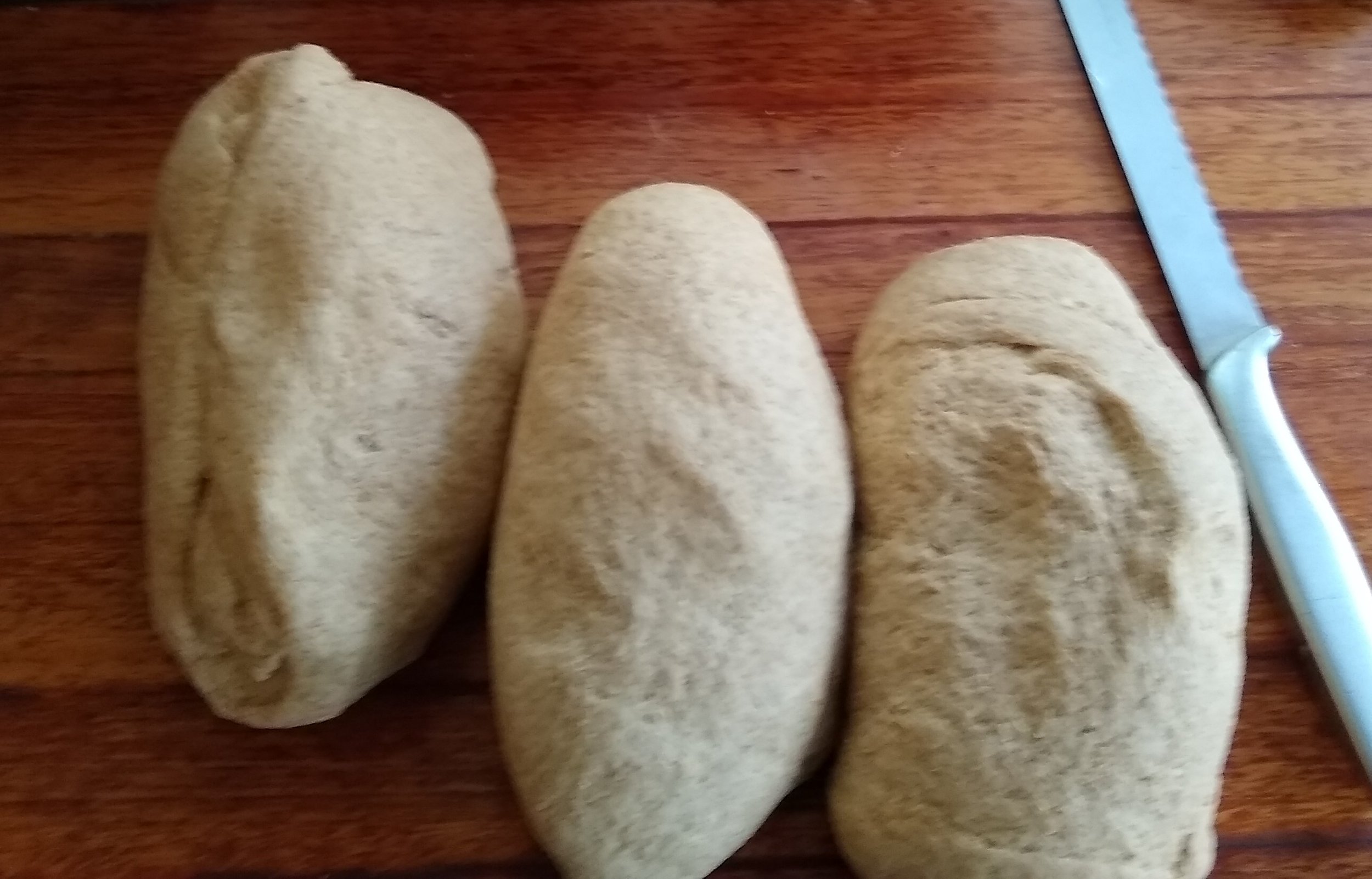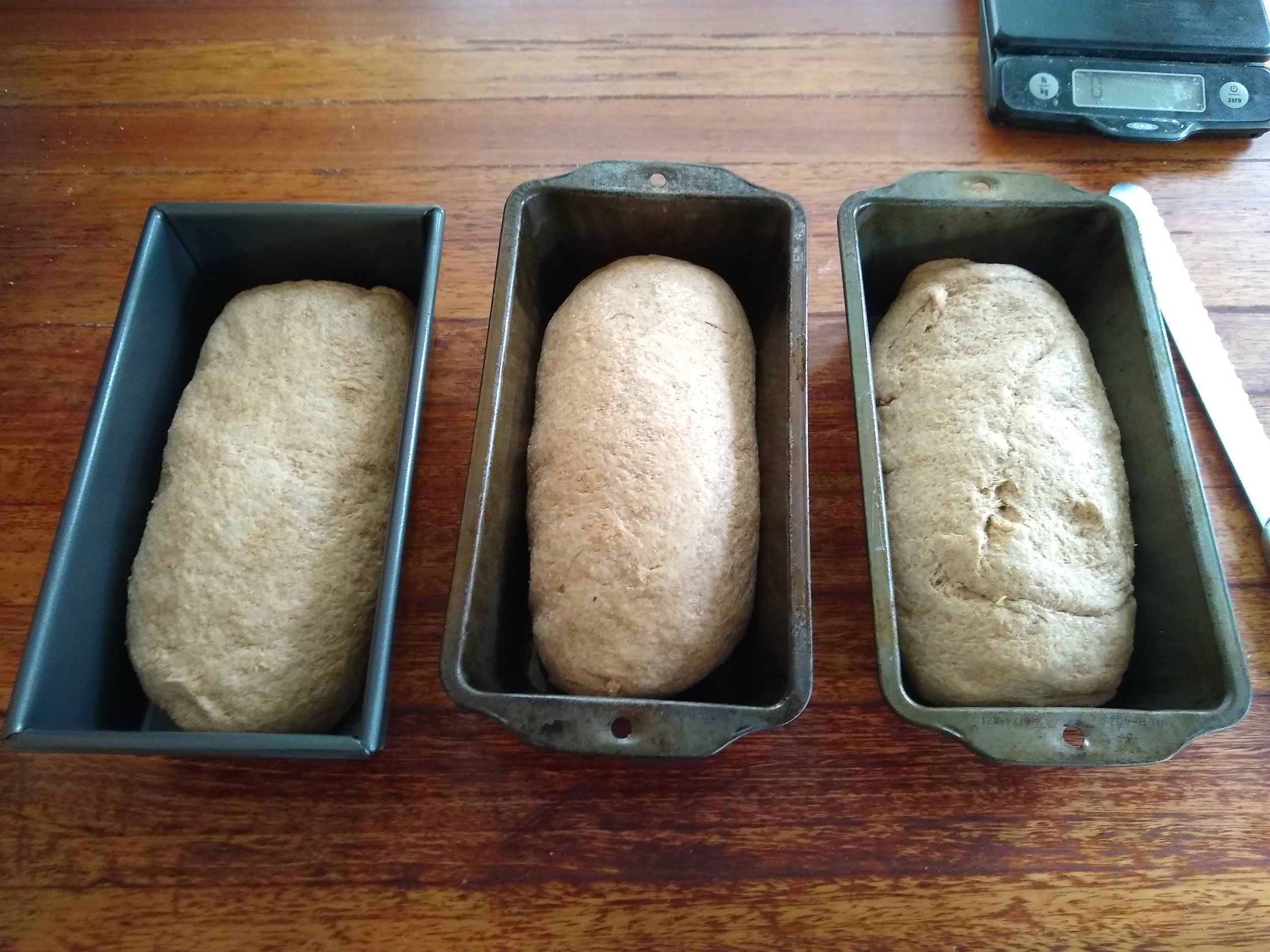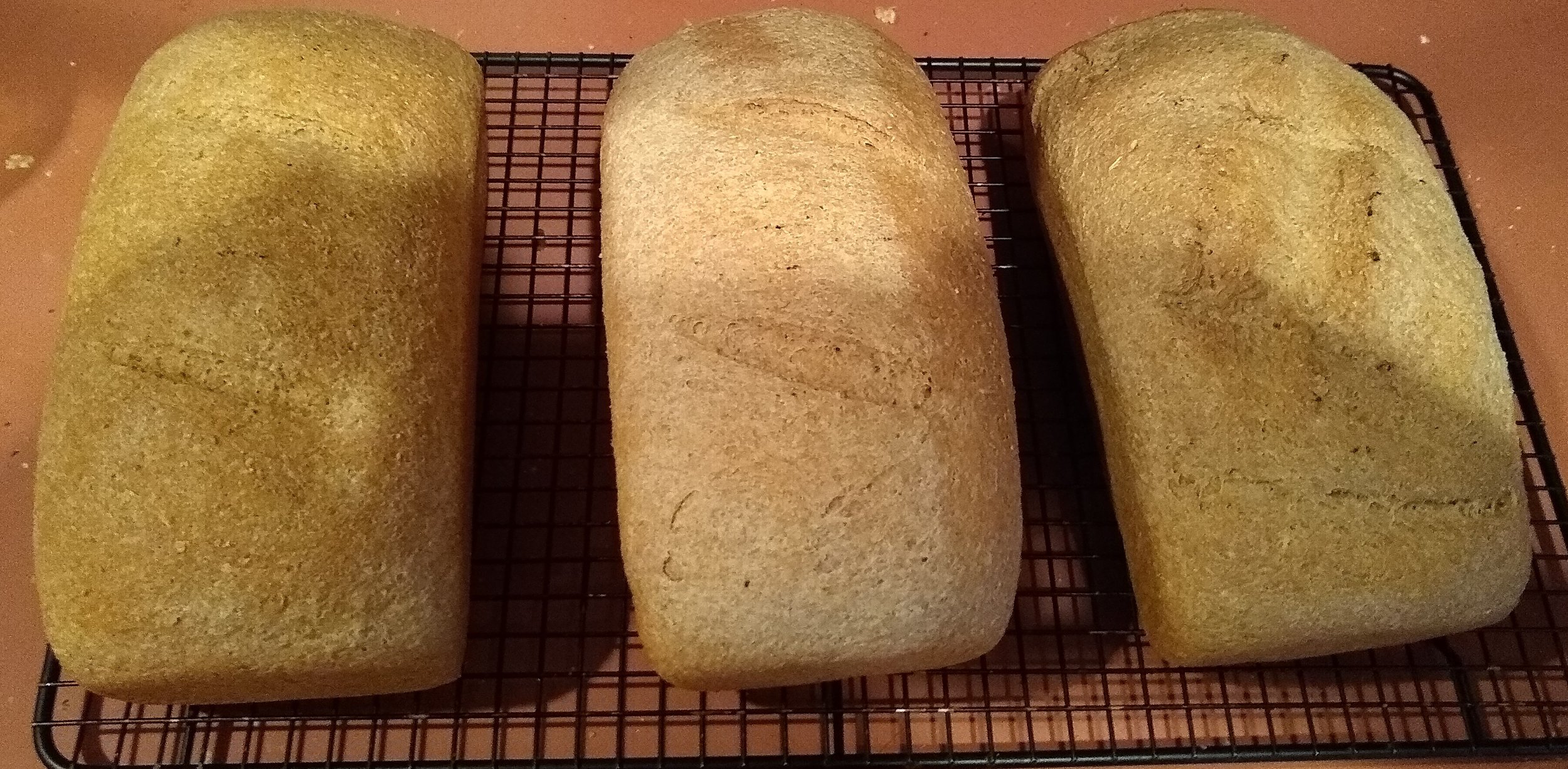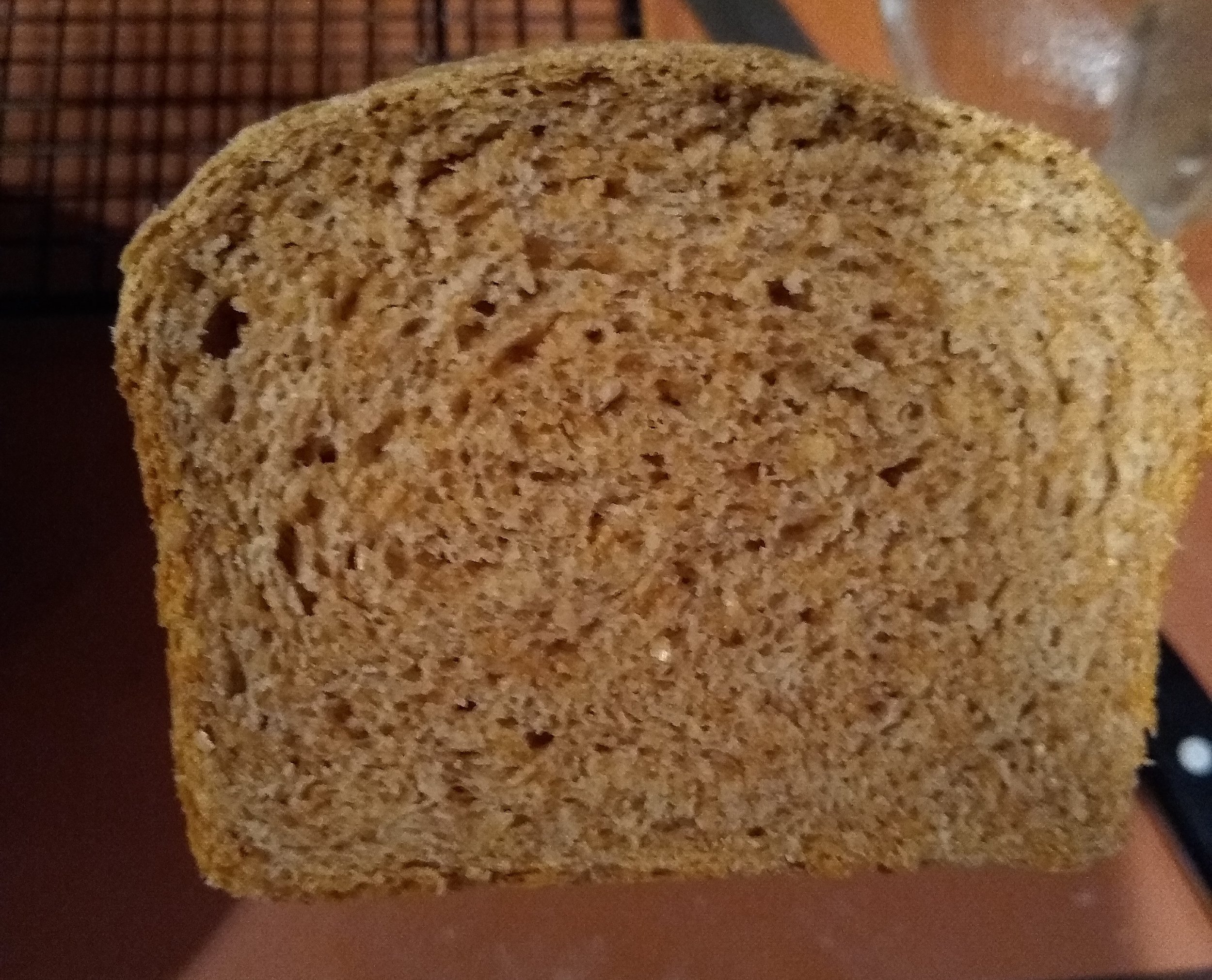Ahh! Homemade bread. That first bite of a warm crusty loaf on a blustery day… And that subtle sweetness and nuttiness that whole wheat flour adds to the loaf… Mmm my mouth is watering just thinking about it.
Yet all too often the home bread maker eagerly slices into a whole wheat loaf only to find it overly dense and dry. Crumbly sawdust is not exactly the texture we were looking for here.
““I like a good hearty loaf of bread or a good hearty baked good, but I don’t want it to be a brick.””
Luckily, CSA member David cracked the code for how to bake bread using only 100% whole wheat flour from Double F Ranch (a fresh-milled, unsifted, hard red spring flour) that yields a delicious, chewy loaf.
And he was kind enough to share his secrets to success!
Even after baking bread for many years, David found reliably producing a quality whole wheat loaf an engaging challenge. With a son who went to culinary baking school there was also a family interest in cracking the code.
But that all changed during pandemic lock down when he came across a “stretch and fold” technique while watching a video in the King Arthur Flour Isolation Baking Series. This technique, combined with a wet dough and a long rest helps to build the gluten network within the bread to provide chewiness and structure.
Curious how this technique would hold up to whole wheat baking, David did some extra research, made careful observations and applied his years of bread-baking knowledge to crafting a whole wheat sandwich bread.
And the resulting loaves he turned out of the pan were fantastic.
““There is really something quite remarkable about the wheat. Either how it is milled or grown. That first loaf David made was quite possibly the best whole wheat bread I have ever had.” ”
100% Whole Wheat Bread - David’s CSA Superpower
Adapted from Tassajara Bread Book and King Arthur Flour - Isolation Baking Show
Makes 3 loaves.
Ingredients
3 ¼+ cups whole milk
2 tablespoons yeast (active dry)
¼ cup brown bugar
1 cup +/- lukewarm water
½ cup gluten (optional, could use AP flour)
5 teaspoons salt
4 oz unsalted butter (1 stick)
9 ¼ cup+/- Double F Whole Wheat Flour
Instructions
Scald 3 ¼ cups milk and let cool.
Proof yeast 5 - 15 minutes with 1 cup water, ¼ cup brown sugar and 2 tablespoons yeast.
Create sponge:
In a large bowl, add 3 ¼ cups cooled milk.
Mix in 4 1/2 cup flour, ½ cup gluten.
Once mixed, beat 100 strokes with spoon.
Cover and set to rise for 30 minutes (I use oven on 'low proof' setting).
Melt butter and let cool.
Add butter and salt to risen sponge. Fold in with dough scraper. Slide scraper down bowl to get under sponge, then pull towards center of dough, turn bowl and repeat.
Add approximately 4 cups flour to bowl, and fold and stretch until all is incorporated. Add more flour if needed. Dough will be tacky, but not stick to bowl, and have a pronounced bounce back when stuck with a finger. Expect this process to take 10 - 15 minutes.
Cover and set to rise 40 minutes.
Punch dough down and set to rise another 30 minutes.
Punch down and divide dough into 3 equal parts (a scale is helpful here).
Gently roll and stretch each loaf and fit in oiled bread pans.
Cover and let rise 35-45 minutes until bread puffs up over top of pan.
Preheat oven to 350 F. I add a baking pan on lowest rack to hold water for steam.
Slash top of loaves with sharp knife and bake 50+/- minutes. Optionally, add 1-2 cups water to baking pan to create steam in oven. This creates a better crust. Bread will sound hollow when done.
Turn loaves out onto rack to cool.
Cut a thick slice of bread while still warm, slather with butter and enjoy.
Thank you Linda and David for sharing this yummy recipe with us!
Be sure to give this recipe a try and share your photos via email or tag @doublefranchmeatcsa on social.

